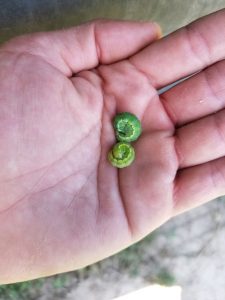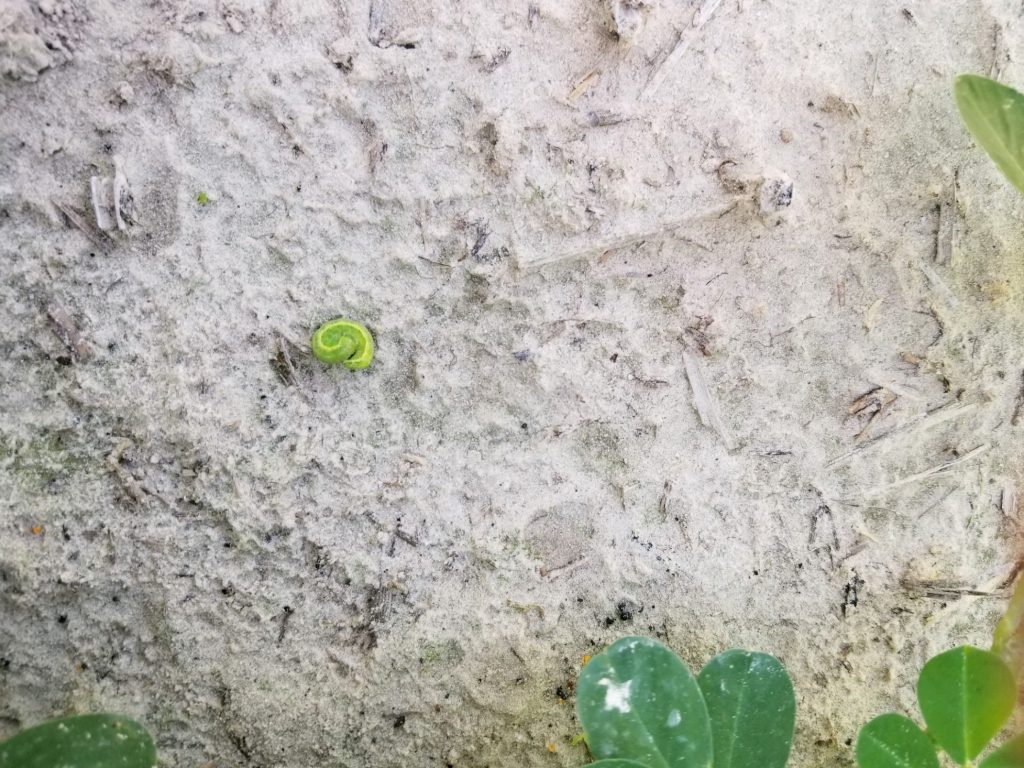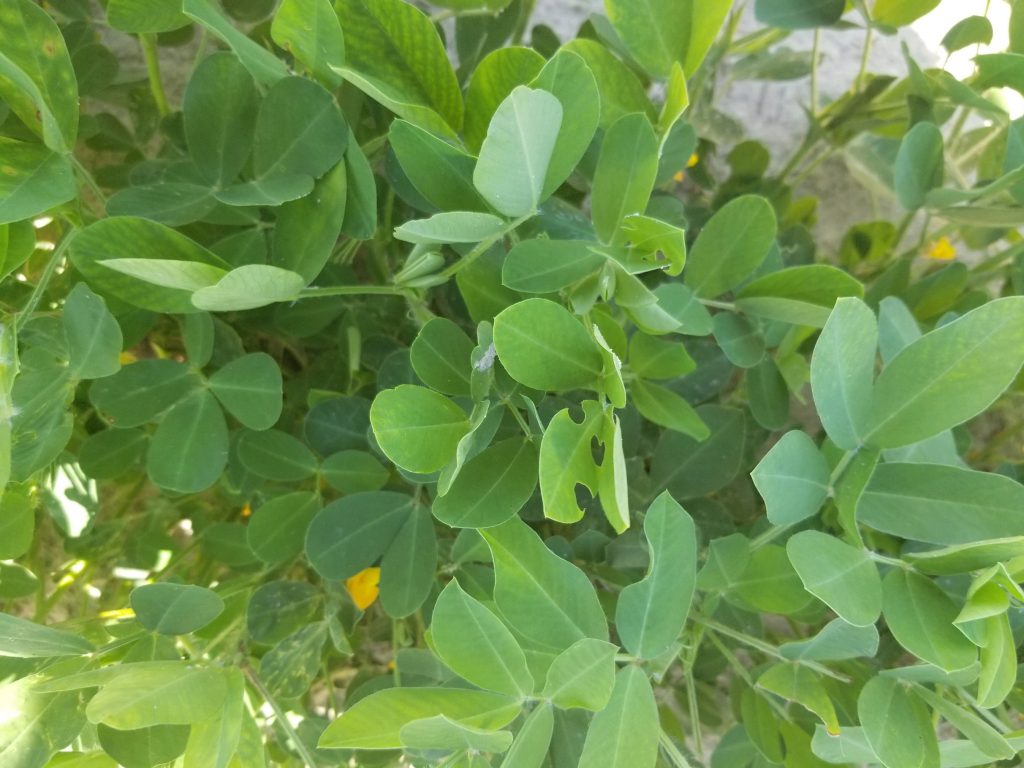Peanut scouts in Suffolk today found fields with above threshold numbers of corn earworm/tobacco budworm (4 per row foot). Fields previously treated recently with chlorpyrifos may be at higher risk because they have fewer beneficial predators.
Black beat cloths can aide in sampling. However, shaking and slapping plants will dislodge worms onto soil for easy counting. Make sure and check around the base of the plant when using either method.
Feeding damage shows up in the form of holes in foliage. Worms may also feed on terminals and flowers so scouting for damage alone is not recommended. Peanuts can lose a lot of leaf material without losing yield, but drought-stressed or herbicide injured plants are at higher risk for yield-loss. Do not spray unless necessary. Recent dry weather in combination with broad-spectrum insecticides can flair spider mites.
Pyrethoids are a common choice for earworm control in Virginia and most products can be tank mixed with a fungicide to save money. Always read and follow label instructions. Pyrethroids are losing efficacy against earworm and we have experienced spray failures in other crops (soybean, cotton, sweet corn). Budworm have been resistant to pyrethroids for some time. You will not be able to distinguish these two species in the field. Refer to NCSU video for details. Do not expect complete control of large worms or high populations. Alternative products labeled in peanut include Prevathon, Besiege, Steward, Radiant, Intrepid Edge, and Blackhawk. A list of products and rates is included in Virginia Tech’s Pest Management Guide.



